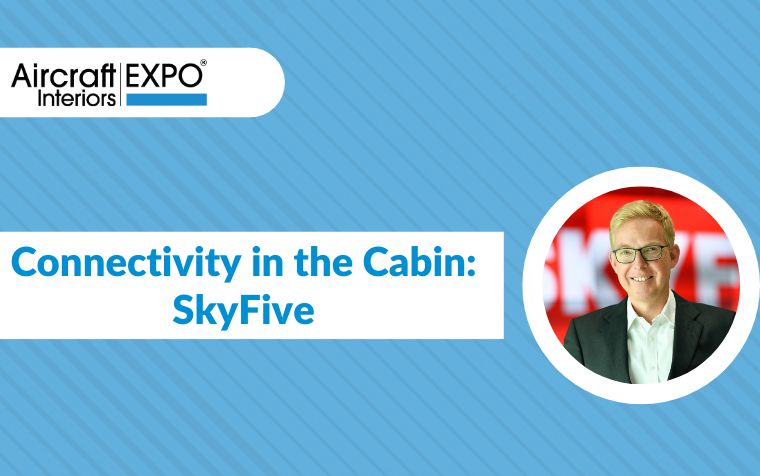The AIX team sat down with aerospace thought-leaders, market disruptors and established companies to discuss how Inflight Entertainment and Connectivity (IFEC) can keep up with changing passenger expectations.
The team spoke with Dirk Lindemeier, Chief Commercial Officer, SkyFive AG.
What are your predictions for connectivity in the cabin in 2023?
“Market dynamics increased remarkably! Airlines are embracing the topic again, after having overcome the pandemic. The traditional satellite industry keeps consolidating, and the long-awaited transition to a new broadband era has started.
At SkyFive we experience a lot of interest for broadband services based on our A2G solution, which started proliferating in the Middle East as the next major market.
The regulatory front is in motion, too, with the European Commission making spectrum available for 5G in the cabin. In summary, airlines and also mobile operators are taking a fresh look at the opportunity, and we can expect to see some exciting announcements at AIX.”
How do you see in-flight connectivity evolving in the next five years?
“At SkyFive we firmly believe that it will become the norm rather than staying the exception. Plenty of surveys confirmed the passenger desire to stay connected during the flight – but that’s not telling us much, as people want to stay connected pretty much everywhere anyhow.
Within the next 5 years we as an industry rather have to focus on how to actually deliver against the passenger expectation, in a profitable manner. My benchmark here is the sports industry in the United States, where clubs invested considerably in getting their stadiums properly connected and, in parallel, developed sophisticated means of digitally engaging with their fans and paying back the stadium investments through app-based sales.”
Some estimations have put the “take-rate” for on-board Wi-Fi at just 6%, with some lamenting the poor connection and inability to stream content.
How do you see the role of Wi-Fi changing in the cabin going forward?
“From our point of view the current model is simply broken, which unfortunately has led to a lot “connectivity fatigue” among airlines. Essentially 3 things have to be accomplished to fix this: a step change in performance, such that the experience matches with passengers’ expectations and 60% rather than 6% of people can go online.
Then a significant reduction of cost, such that connectivity becomes a positive business case for airlines (which today it is not). And finally, a radical simplification of how to access the service, such that passengers can come online with a single click and without the need to make a manual payment.”
The demand to stream content including on short and medium flights has proliferated.
How will airlines ensure they continue to meet this demand?
“Such flights are really the sweet spot for our A2G solution, for a couple of reasons: firstly, the A2G system is so compact and cost-efficient that it can easily be fitted on any single-aisle aircraft, including smaller regional jets and turboprops, which typically serve the shorter routes.
Secondly, airlines can afford to turn today’s high price/low adoption paradigm upside down and offer Wi-Fi to the masses at the price of a cup of coffee.
Thirdly, seamless access through passengers’ mobile subscriptions has a very strong case here, as people do not want to interrupt any of their ongoing activities while being onboard the aircraft. And fourthly, connecting a new set of passengers 4-5 times a day on a smaller aircraft equipped with a cheap A2G system yields a much better ROI than doing the same once or twice a day on a larger aircraft with an expensive satellite system.”
The EU commission has unveiled plans for airlines to implement 5G technologies onboard for passengers.
Do you see this revolutionising onboard connectivity?
“We welcome all attempts of the European Commission that are geared towards improving the connectivity of passengers onboard of aircraft. Making radio spectrum available for this purpose is a strong statement, and the concept of deploying a single network that all mobile operators can offer their services over has been well proven in other cases where a lot of people want to connect in a somewhat hard-to-access location, such as, the London tube.
As a result, passengers will just remain attached to their mobile operator like on the ground, and airlines will need a strong datalink between the cabin and the ground for connecting them all to the Internet.”



